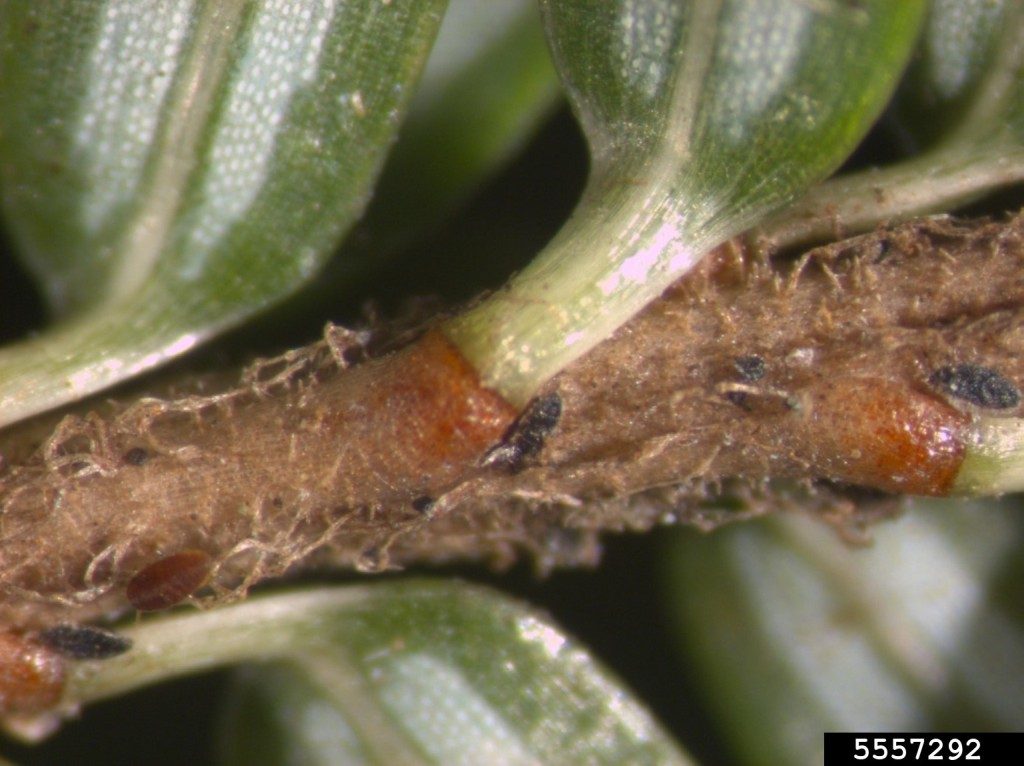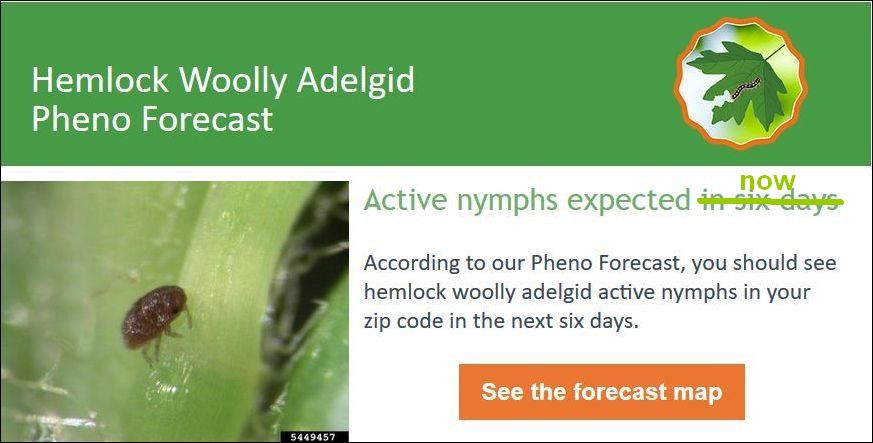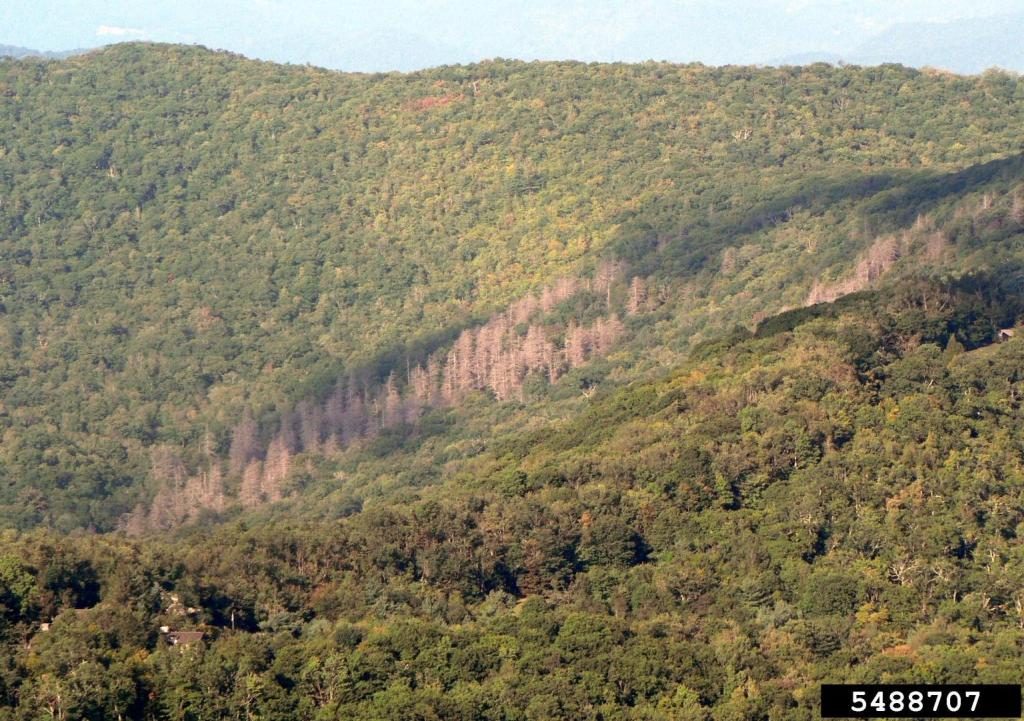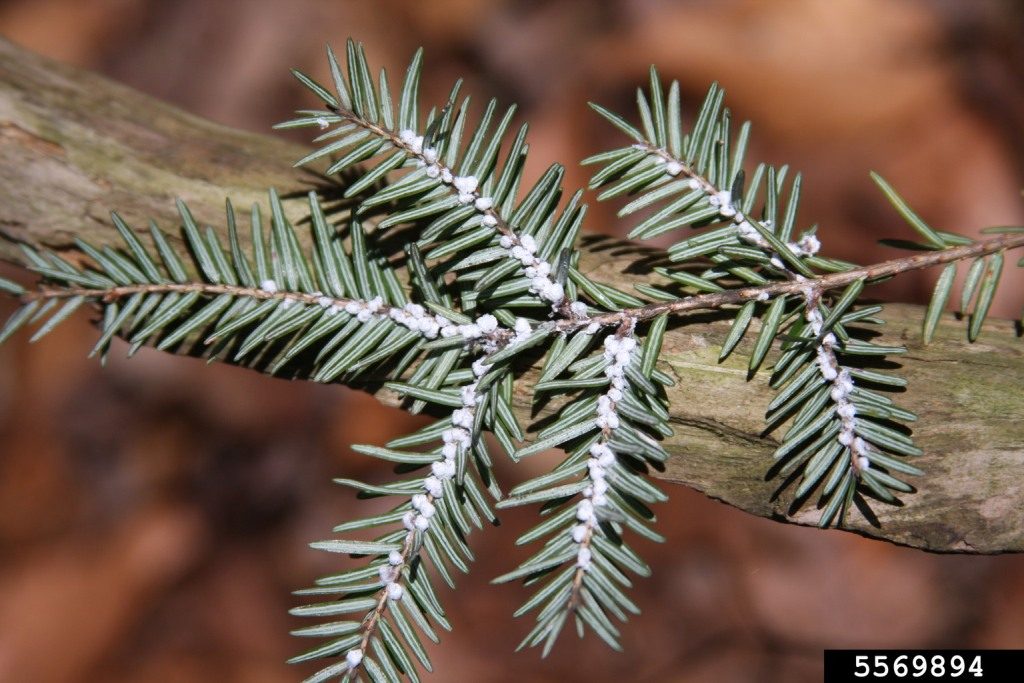
A week ago I received a message from the USA National Phenology Network that hemlock woolly adelgids would hatch very soon in Pittsburgh and the southern Appalachians. This is worrisome because the nymphs are the active phase of this forest pest.

Originally from Japan, hemlock woolly adelgids (Adelges tsugae) kill eastern hemlocks in 4-20 years by locking on where the needle meets the stem and sucking the lifeblood out of the tree (closeup at top).
The adults are sedentary, attached to a tree. The nymphs, however, are tiny and mobile. They blow on the wind and hitchhike on clothes, equipment, birds and animals. They spread very easily just after they’ve hatched.
The message above says “You should see active nymphs” but you won’t. At 1/100th of an inch they’re smaller than a grain of sand, almost microscopic. And yet, their effect is devastating.
Hemlock woolly adelgids have already killed up to 80% of the hemlocks on parts of the Blue Ridge Parkway and in Shenandoah National Park. They are eating their way through the Great Smoky Mountains, shown below, and they’re killing hemlocks in Pennsylvania.

We won’t know how far they’ve spread this spring until they reveal their presence next fall when the females deposit woolly egg sacs on the undersides of hemlock branches.

Right now the nymphs are spreading.
Read more about hemlock woolly adelgids at the USA National Phenology Network.
(photos from Bugwood’s invasive.org, message and map from USANPN. Click on the captions to see the originals)
Thanks for the information. What do I do to eliminate and / or proactively minimize the infestation of this pest.
Richard Lieb, here’s some information https://www.gardeningknowhow.com/ornamental/trees/hemlock/hemlock-woolly-adelgid.htm It’s also good to call an arbortist. (I use Bartlett Tree Service.)